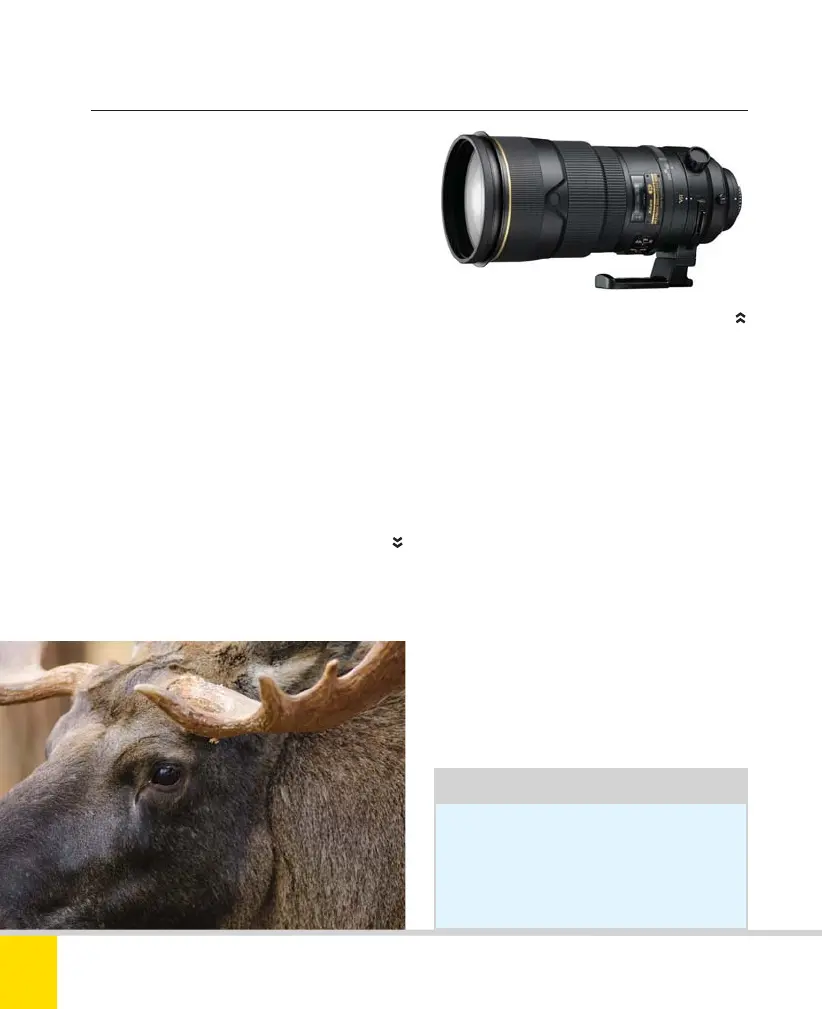Free ebooks ==> www.ebook777.com
Telephoto lenses, often simply called long
lenses, give a narrow angle of view. They
are mostly employed when working
distances need to be longer, as in wildlife
and sports photography, but have many
other uses, such as singling out small
and/or distant elements in a landscape.
Moderate telephoto lenses are favored for
portrait photography, because the greater
working distance gives a natural-looking
result and is more comfortable for nervous
subjects. The traditional “portrait” range is
85–135mm, equivalent to using lenses of
around 60–90mm with the D5300.
The laws of optics, combined with
greater working distances, mean depth
Tip
Switch VR OFF when using the
camera on a tripod. Otherwise,
it can sometimes add shake
instead of removing it.
of field is limited. This is often beneficial
in portraiture, wildlife, and sport, as it
concentrates attention on the subject by
throwing backgrounds out of focus. It can
be less welcome in landscape shooting.
The size and weight of longer lenses
make them harder to handhold
comfortably, and their narrow angle of
view also magnifies any movement; high
shutter speeds and/or the use of a tripod
or other camera support are therefore the
order of the day. Nikon’s Vibration
Reduction (VR) technology also mitigates
the effects of camera shake—but it can
slow down the maximum frame rate, a
factor sports shooters in particular need
to recognize.
NIKKOR 300MM F/2.8G ED VR II AF-S
EYE-TO-EYE
Wildlife photographers favor telephoto lenses
for getting close to the subject without causing
unnecessary disturbance. 180mm, 1/400 sec.,
f/2.8, ISO 400.
›
Telephoto lenses
198
NIKON D5300
7
Nikon D5300 Ch7 184-207 P2 RY.indd 198Nikon D5300 Ch7 184-207 P2 RY.indd 198 19/02/2014 17:1019/02/2014 17:10

